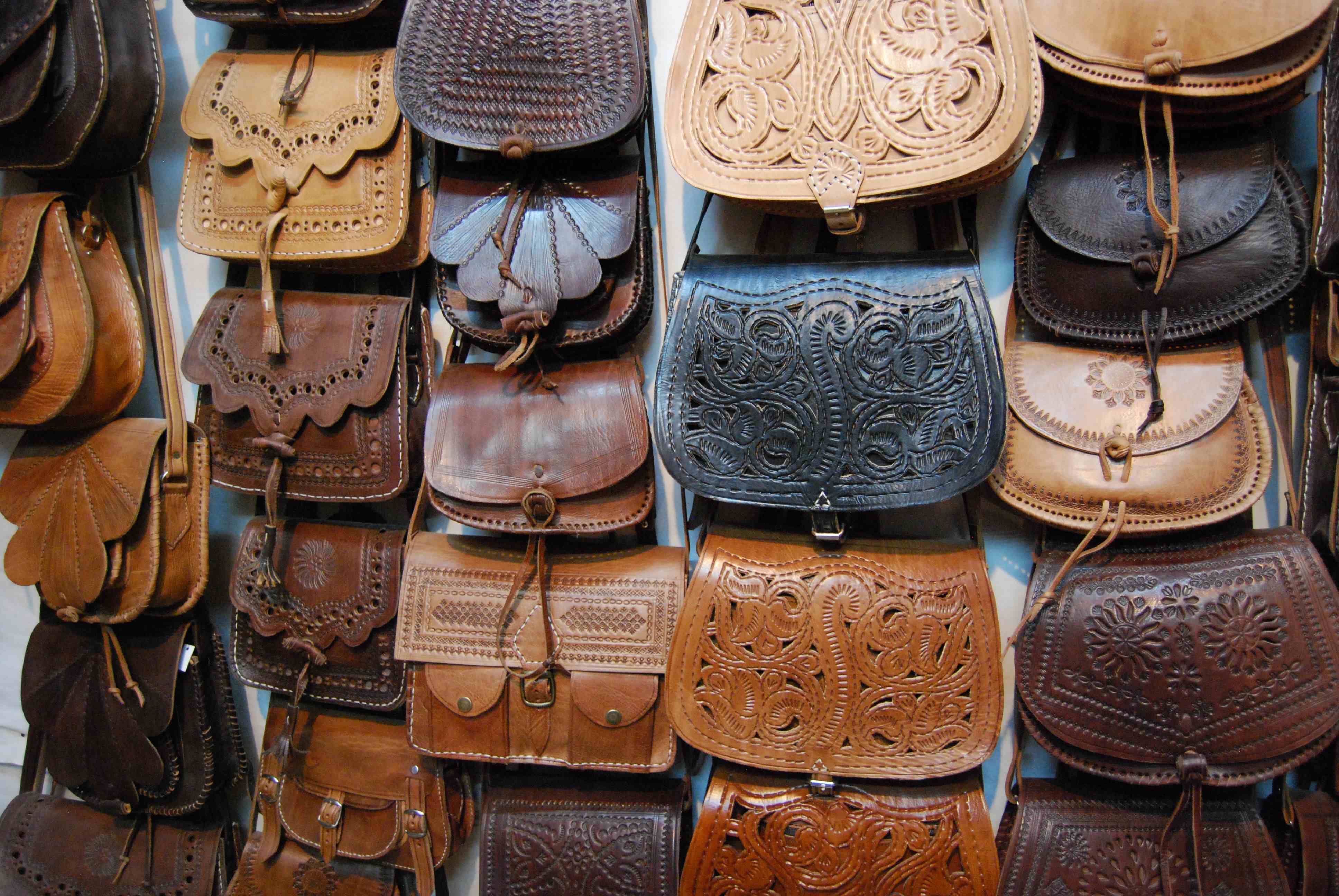The Third International Exhibition of Bags, Shoes, Leather and Related Industries opened in Tehran on Tuesday, with foreign companies from 80 countries exhibiting their brands.
Held at the Tehran International Exhibition Center, the four-day event hosted 220 domestic firms showcasing products made from high quality Iranian leather.
Inaugurating the expo, Minister of Industries, Mining and Trade Mohammad Reza Nematzadeh said Iran’s leather exports currently stand at $120 million per annum, adding that the sector has much room for growth.
“About 120,000 people are employed in Iran’s leather industry and produce 200 million products a year,” he said.
In recent years, the domestic industry has seen the emergence of companies that produce high quality leather products and managed to establish popular brands, many of which took part in this year’s exhibition alongside their experienced counterparts who have been active in the market for decades.
Things Are Looking Up
Mohammad Naqi Salimi, CEO of Melli Shoe Company, one of Iran’s oldest brands in the field, said the industry is picking up and that he sees a bright future.
“The government is finally taking effective measures to support producers. For one thing, the drive against contraband is becoming stricter. Even our own shipments are being inspected in interprovincial borders, which is a good sign,” he said.
“Customs authorities have set reasonable tariffs on imported goods, especially items that are produced domestically. This gives our local producers scope for activity.”
Salimi noted that the domestic market is in good shape and people can now distinguish between good and poor quality, genuine and fake products.
Nevertheless, he added, exports are minimal due to the domestic companies’ low-key activity in introducing Iranian leather products in the global market.
“We need to educate people in the field and also overhaul our machinery,” he said.
The CEO complained of the high expenses related to insurance fees of the workforce and wants the government to help ease the heavy burden.
“Eight years ago, we included shoe production technology to majors taught at the university and so far the number of graduates amounts to nearly 120 people,” he said.
Salimi, who is also with the Iranian National Standards Organization, said that in recent years, steps have been taken to set standards on par with those of renowned international institutions and that today Iran is an active member of the Technical Committee of the International Organization for Standardization.
Jalal Hosseinikhah, CEO of Maral Leather Company, one of the most prominent producers in the field, said the lion’s share of the leather used in the industry is supplied domestically and a very small part comes from Turkey.
“But the problem is that the production chain is not complete. Part of the chain, including shoe soles, buckles and other accessories, are not produced domestically on a large scale. In the rare cases of domestic production of these items, they lack quality. We need to focus our efforts to create added value and produce luxury products,” he said.
Hosseinikhah noted that many production units have, in recent years, renovated their machinery and equipment. Most of the machinery come from Italy, Germany and China.
These companies are now aiming at producing items that meet international standards and can be easily exported.
“We do have, at present, production units that export items such as shoes made from plastic, sandals and flip flops, but we have not been very successful in exporting leather products mainly because of poor marketing,” he said.
“Yet, the small amount of export of such items goes to the neighboring countries. We also have exports to Kazakhstan, Italy, Australia, the UAE and Kuwait.”
Hosseinikhah further said Turkey is one of the biggest suppliers of leather and leather products, which has recently lost its market in Russia.
“This provides us with a good opportunity to introduce Iranian products and replace that country in Russia’s voracious market. Iranian producers need to work harder in the global market and attend more international exhibitions,” he said.
Production Hampered at Many Levels
“Production is hard and risky. Many of the chemical materials used in leather production are imported and very expensive. There are certain policies imposed on hide sales, which lead to an increase to the price of leather, whereas the same leather can be bought from Turkey at much lower prices,” he said.
“Expensive raw materials and worn-out machinery also increase production expenses and contribute to the high prices of our products. This is another reason for our products’ non-competitiveness in the international market.”
Hosseinikhah said the government has started to lend support to producers and that production units located in industrial parks can benefit from loans and banking facilities.
“Yet, tax is an ever-growing problem. The tax we have to pay this year is eight times more than last year’s. The Iranian National Tax Administration levied tax based on the number of workforce. This is while the shoe and bag industry is highly dependent on manual labor and therefore it’s slow paced and production is not high,” he said.
“There is a new regulation set by INTA that brands must pay an extra amount of tax simply because they are brands, arguing that producers who have managed to establish their brands have high sales. This is while such producers are building up the market with their capabilities and expertise, and should be supported instead of being overtaxed.”
Hosseinikhah said the municipality charges separate duties on the outlets.
Valiollah Rezaei, commercial manager at Saman Paydar Navid Co., an importer of raw materials and industrial machinery, said his company acts as an intermediary and introduces Iranian producers in the field to foreign machinery manufacturers to do business together.
This year, he has arranged for over 30 foreign companies to take part in the exhibition, stating that he aims “to transfer the latest technology to the country”.
“The leather industry is a professional business that demands high levels of expertise. There is no manufacturer of shoes and bag machinery that is 100% Iranian. The industry is in need of foreign technology,” he said.
Rezae complained of the increase in foreign currency exchange rates, high interest banking facilities and unstable regulations that, one way or another, impede production and trade.
“Our leather industry is limited to supplying the domestic need. If and when the market faces problems like recession, it will be hit hard because we have no alternative markets to offer our products to,” he said.
Strong Presence of Foreigners
The attendance of foreign companies in this year’s exhibition was eye-catching. However, machinery manufacturers are cautiously evaluating the possibilities of joint cooperation since they believe it’s still early to decide.
Zahid Salem, export manager with the Italian based OMAC Srl, a well-known manufacturer of bag, wallet and accessories machinery worldwide, said it’s the fourth time he is representing the company in Iran.
“Our main markets are China, Indonesia, Vietnam and India, and many prominent brands use our machinery. Iran for us is an emerging market and we are doing very well here,” he said.
“At present, we are looking for good customers for our products, but we don’t want to lose our name as Made in Italy, so we are not after producing the machinery in Iran just yet.”
Salem believes the market will not boom immediately but says they pursue long-term plans in Iran.
“There are a lot of Chinese here but we have no competition with them because we have our own brand and enjoy a different level of quality.”
Christel Gross, sales manager and shoe division administration manager of Schoen+Sandt Machinery GmbH based in Pirmasens, Germany, said it’s her first time in Iran and that she learned about the expo through the German Association of Machinery Producers.
“We heard that the market will improve and we are sanguine. We produce shoe machines and cutting machines that can cut anything, besides metal. Our target is to find a good agent for our products in Iran,” she said.
“We are taking the first step which is to introduce and sell our machinery here. We are also looking ahead and want to expand our activity and maybe produce our machinery here in Iran in the future.”



